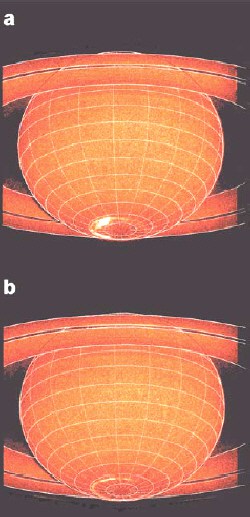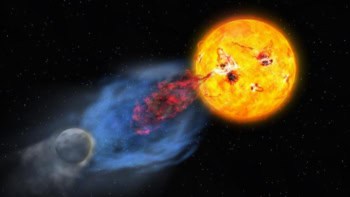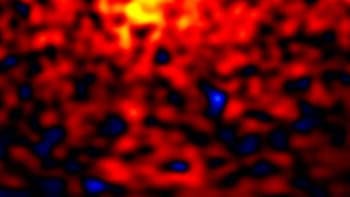A team of space scientists from France and the US has taken the first ever images of a geomagnetic storm on Saturn. The team believe that the storm was caused by an interplanetary shock wave that can be traced back to a coronal mass ejection at the Sun. The team has also been able to detect the effects of the shock on the Earth and Jupiter before it reached Saturn (R Prangé et al. 2004 Nature 432 78).

Geomagnetic or auroral storms happen on the Earth when the solar wind interacts with the geomagnetic field. However, coronal mass ejections — violent eruptions on the surface of the Sun — can trigger interplanetary shock waves that compress the Earth’s magnetosphere and lead to auroral storms. These storms are routinely monitored by the “Space Weather” satellites. Other planets with magnetic fields also experience geomagnetic storms but these are difficult to observe.
In early December 2000, Renée Prangé of the Observatoire de Paris and co-workers used the STIS instrument on the Hubble Space Telescope to image an aurora on Saturn. This aurora contained bright features that had never been seen before and led the French–US team to believe that it had observed an auroral storm.
Working backwards in time, the team traced this storm back to a series of coronal mass ejections that occurred between 1 and 10 November. These ejections triggered a sequence of five shocks, which were detected near the Earth by the WIND, ACE and POLAR spacecraft about two days later.
Using a new magnetohydrodynamic computer code Prangé and co-workers at the University of Michigan, the US Naval Research Laboratory and the Jet Propulsion Laboratory predicted that these shocks — which later merged into a single long shock — should have passed Jupiter’s magnetosphere between 18 and 24 November. The Cassini mission — then on its way to Saturn — was near Jupiter at the time and was able to confirm this. The team then calculated that the shock must have passed Saturn between 2 and 8 December. The Hubble STIS images of the storm were taken on December 7 and 8.
There were some similarities between the storms on Saturn and those seen on the Earth, like brightening of the aurora around midnight, which suggests that similar processes could be at work on both planets. However, there were also differences, such as the lack of expansion of the aurora towards lower latitudes on Saturn. The team now hopes to make further observations with Cassini, which is currently in orbit around Saturn.



